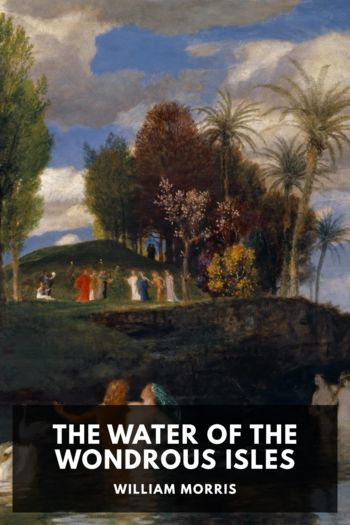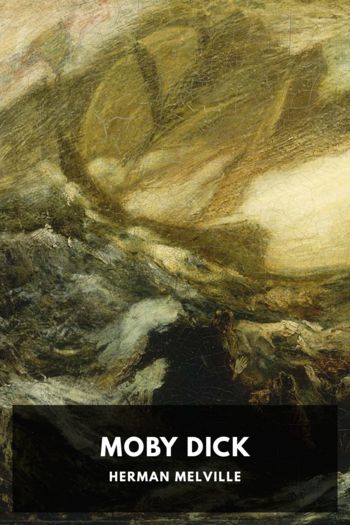Short Fiction Herman Melville (best books to read fiction .TXT) 📖

- Author: Herman Melville
Book online «Short Fiction Herman Melville (best books to read fiction .TXT) 📖». Author Herman Melville
On fishing parties from ships, at various times, I have chanced to visit each of these groups. The impression they give to the stranger pulling close up in his boat under their grim cliffs is, that surely he must be their first discoverer, such, for the most part, is the unimpaired … silence and solitude. And here, by the way, the mode in which these isles were really first lighted upon by Europeans is not unworthy of mention, especially as what is about to be said, likewise applies to the original discovery of our Encantadas.
Prior to the year 1563, the voyages made by Spanish ships from Peru to Chili, were full of difficulty. Along this coast, the winds from the South most generally prevail; and it had been an invariable custom to keep close in with the land, from a superstitious conceit on the part of the Spaniards, that were they to lose sight of it, the eternal trade-wind would waft them into unending waters, from whence would be no return. Here, involved among tortuous capes and headlands, shoals and reefs, beating, too, against a continual head wind, often light, and sometimes for days and weeks sunk into utter calm, the provincial vessels, in many cases, suffered the extremest hardships, in passages, which at the present day seem to have been incredibly protracted. There is on record in some collections of nautical disasters, an account of one of these ships, which, starting on a voyage whose duration was estimated at ten days, spent four months at sea, and indeed never again entered harbor, for in the end she was cast away. Singular to tell, this craft never encountered a gale, but was the vexed sport of malicious calms and currents. Thrice, out of provisions, she put back to an intermediate port, and started afresh, but only yet again to return. Frequent fogs enveloped her; so that no observation could be had of her place, and once, when all hands were joyously anticipating sight of their destination, lo! the vapors lifted and disclosed the mountains from which they had taken their first departure. In the like deceptive vapors she at last struck upon a reef, whence ensued a long series of calamities too sad to detail.
It was the famous pilot, Juan Fernandez, immortalized by the island named after him, who put an end to these coasting tribulations, by boldly venturing the experiment—as De Gama did before him with respect to Europe—of standing broad out from land. Here he found the winds favorable for getting to the South, and by running westward till beyond the influences of the trades, he regained the coast without difficulty; making the passage which, though in a high degree circuitous, proved far more expeditious than the nominally direct one. Now it was upon these new tracks, and about the year 1670, or thereabouts, that the Enchanted Isles, and the rest of the sentinel groups, as they may be called, were discovered. Though I know of no account as to whether any of them were found inhabited or no, it may be reasonably concluded that they have been immemorial solitudes. But let us return to Redondo.
Southwest from our tower lies all Polynesia, hundreds of leagues away; but straight west, on the precise line of his parallel, no land rises till your keel is beached upon the Kingsmills, a nice little sail of, say 5000 miles.
Having thus by such distant references—with Rodondo the only possible ones—settled our relative place on the sea, let us consider objects not quite so remote. Behold the grim and charred Enchanted Isles. This nearest crater-shaped headland is part of Albemarle, the largest of the group, being some sixty miles or more long, and fifteen broad. Did you ever lay eye on the real genuine Equator? Have you ever, in the largest sense, toed the Line? Well, that identical crater-shaped headland there, all yellow lava, is cut by the Equator exactly as a knife cuts straight through the centre of a pumpkin pie. If you could only see so far, just to one side of that same headland, across yon low dikey ground, you would catch sight of the isle of Narborough, the loftiest land of the cluster; no soil whatever; one seamed clinker from top to bottom; abounding in black caves like smithies; its metallic shore ringing under foot like plates of iron; its central volcanoes standing grouped like a gigantic chimney-stack.
Narborough and Albemarle are neighbors after a quite curious fashion. A familiar diagram will illustrate this strange neighborhood:
Cut a channel at the above letter joint, and the middle transverse limb is Narborough, and all the rest is Albemarle. Volcanic Narborough lies in the black jaws of Albemarle like a wolf’s red tongue in his open month.
If now you desire the population of Albemarle, I will give you, in round numbers, the statistics, according to the most reliable estimates made upon the spot:
Men, none. Anteaters, unknown. Man-haters, unknown. Lizards, 500,000. Snakes, 500,000. Spiders, 10,000,000. Salamanders, unknown. Devils, do. Making a clean total of 11,000,000,exclusive of an incomputable host of fiends, anteaters, man-haters, and salamanders.
Albemarle opens his mouth towards the setting sun. His distended jaws form a great bay, which Narborough, his tongue, divides into halves, one whereof is called Weather Bay, the other Lee Bay; while the volcanic promontories, terminating his coasts, are styled South Head and North Head. I note this, because these bays are famous in the annals of the Sperm Whale Fishery. The whales come here at certain seasons to calve. When ships first cruised hereabouts, I am told, they used to blockade





Comments (0)